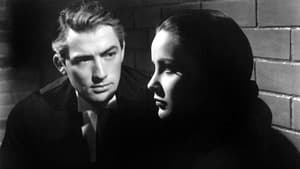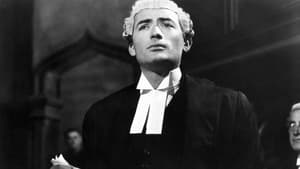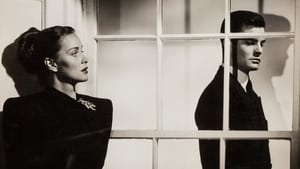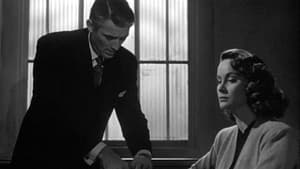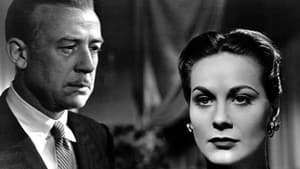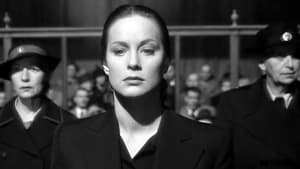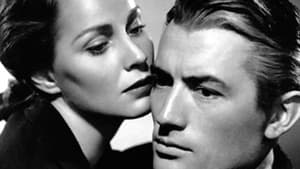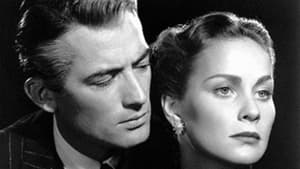Contact: [email protected]
Video Sources 0 Views
- Watch trailer
- The Paradine Case


Synopsis
Table of Contents
ToggleReview: The Paradine Case (1947) – A Hitchcockian Courtroom Drama

Introduction
Alfred Hitchcock’s The Paradine Case, released in 1947, is a captivating courtroom drama that showcases the master filmmaker’s skill in building tension and suspense. Despite mixed critical reception upon its release, the film remains an intriguing entry in Hitchcock’s oeuvre, offering a compelling narrative and memorable performances. In this review, we’ll delve into the world of The Paradine Case and explore its merits as a classic Hitchcockian thriller.
Check The Full Colorized Movies List
Check Our Colorized Movies Trailer Channel
Understanding The Paradine Case (1947): Director, Cast, and Genre
Directed by Alfred Hitchcock, The Paradine Case features a talented cast led by Gregory Peck, Ann Todd, and Alida Valli. The film falls within the courtroom drama genre, characterized by its focus on legal proceedings and the pursuit of justice.
Exploring the World of The Paradine Case (1947): Plot and Characters
The Paradine Case follows the story of Anthony Keane, a married barrister who becomes entangled in a complex case defending the enigmatic Mrs. Paradine, accused of murdering her wealthy husband. As Keane delves deeper into the case, he finds himself drawn to Mrs. Paradine, leading to a web of deceit, betrayal, and ultimately, tragedy.
The Art of Film Colorization
While The Paradine Case was originally filmed in black and white, its early colorized version adds a new layer of depth to its atmospheric visuals. The colorization process enhances the film’s mood and atmosphere, bringing Hitchcock’s cinematic vision to life with striking clarity.
Early Colored Films: A Brief History
The history of early colored films is marked by innovation and experimentation as filmmakers sought to enhance the visual appeal of their movies. From hand-tinted frames to pioneering technicolor processes, the evolution of colorization techniques transformed the cinematic landscape, offering audiences a new way to experience classic films.
The Paradine Case (1947) and Its Early Colored Version
The decision to release The Paradine Case in a colorized format was made with the intention of immersing audiences in the film’s atmospheric visuals and enhancing its cinematic impact. While some purists may prefer the original black and white version, the early colorized edition of The Paradine Case offers a fresh perspective on Hitchcock’s masterful storytelling and the performances of its cast.
The Debate Over Film Colorization
The debate over film colorization remains a contentious issue in the film community, with proponents arguing that it breathes new life into classic films and makes them more accessible to modern audiences, while detractors maintain that it compromises the artistic integrity of the original work. As technology advances, the debate continues to evolve, reflecting changing attitudes towards the preservation and presentation of cinematic classics.
Examining The Paradine Case (1947) as an Early Colored Film
Viewing The Paradine Case in its early colorized iteration offers audiences a fresh perspective on Hitchcock’s visual storytelling and the nuanced performances of its cast. The colorization process enhances the film’s mood and atmosphere, bringing Hitchcock’s cinematic vision to life in vibrant detail. As viewers are drawn into the complex web of intrigue and deception, they are treated to a visual feast that immerses them in the world of The Paradine Case.
Influence and Legacy: The Paradine Case (1947)’s Impact on Cinema
While The Paradine Case received mixed critical reception upon its release, it remains an intriguing entry in Hitchcock’s filmography, showcasing his skill in building tension and suspense. The film’s exploration of moral ambiguity and the pursuit of justice continues to resonate with audiences, cementing its status as a classic Hitchcockian thriller.
Director’s Cinematic Legacy: Beyond The Paradine Case (1947)
Alfred Hitchcock’s directorial legacy extends far beyond The Paradine Case, encompassing a diverse body of work that includes acclaimed films such as Psycho, Vertigo, and North by Northwest. As one of the most influential filmmakers of the 20th century, Hitchcock’s innovative storytelling and mastery of suspense continue to inspire filmmakers and thrill audiences around the world.
Themes Explored in The Paradine Case (1947)
At its core, The Paradine Case explores themes of obsession, betrayal, and the pursuit of justice in the face of moral ambiguity. Through its complex characters and Hitchcock’s trademark suspenseful storytelling, the film offers a thought-provoking meditation on the nature of guilt and innocence in the criminal justice system.
Reception and Controversy Surrounding The Paradine Case (1947)
Upon its release, The Paradine Case received mixed reviews from critics, with some praising its atmospheric visuals and Hitchcock’s skillful direction, while others criticized its convoluted plot and pacing issues. The decision to release the film in a colorized format sparked debate among purists, reflecting ongoing discussions about the preservation and presentation of classic films.
Where to Watch The Paradine Case (1947) Online
For those eager to experience The Paradine Case for themselves, the film is readily available on popular streaming platforms such as Amazon Prime Video, Google Play Movies, and iTunes. Whether viewed in its original black and white format or its early colorized iteration, The Paradine Case offers a cinematic experience that is both thought-provoking and visually stunning.
FAQs About The Paradine Case (1947)
1. Is The Paradine Case based on a true story?
No, The Paradine Case is a fictional film that explores the complexities of the criminal justice system through the lens of a high-profile murder trial. While the film’s storyline may draw inspiration from real-life legal cases, its characters and plot are works of fiction.
2. Who starred in The Paradine Case?
The Paradine Case stars Gregory Peck in the role of Anthony Keane, a married barrister who becomes entangled in a complex murder trial. He is supported by a talented ensemble cast, including Ann Todd, Alida Valli, and Charles Laughton.
3. What is the central message of The Paradine Case?
At its core, The Paradine Case explores themes of obsession, betrayal, and the pursuit of justice in the face of moral ambiguity. Through its complex characters and Hitchcock’s trademark suspenseful storytelling, the film offers a thought-provoking meditation on guilt and innocence in the criminal justice system.
4. Why was The Paradine Case released in a colorized format?
The decision to release The Paradine Case in a colorized format was made with the intention of enhancing the film’s visual impact and immersing audiences in its atmospheric visuals. While some purists may prefer the original black and white version, the early colorized edition of The Paradine Case offers a fresh perspective on Hitchcock’s masterful storytelling and the performances of its cast.
5. What is the legacy of The Paradine Case?
While The Paradine Case received mixed critical reception upon its release, it remains an intriguing entry in Hitchcock’s filmography, showcasing his skill in building tension and suspense. The film’s exploration of moral ambiguity and the pursuit of justice continues to resonate with audiences, cementing its status as a classic Hitchcockian thriller.
6. Are there any sequels or remakes of The Paradine Case?
No, there have been no official sequels or remakes of The Paradine Case. However, the film’s exploration of legal drama and moral complexity has inspired countless reinterpretations and homages in various media.
7. Where can I watch The Paradine Case online?
For those eager to experience The Paradine Case for themselves, the film is readily available on popular streaming platforms such as Amazon Prime Video, Google Play Movies, and iTunes. Whether viewed in its original black and white format or its early colorized iteration, The Paradine Case offers a cinematic experience that is both thought-provoking and visually stunning.
Conclusion
In conclusion, The Paradine Case (1947) remains a captivating entry in Alfred Hitchcock’s filmography, showcasing his skill in building tension and suspense. Whether viewed in its original black and white format or its early colorized iteration, the film offers a thought-provoking exploration of obsession, betrayal, and the pursuit of justice in the face of moral ambiguity. As audiences are drawn into the complex web of intrigue and deception, they are treated to a visual and emotional journey that is quintessentially Hitchcockian. The Paradine Case continues to captivate and intrigue audiences, cementing its status as a classic courtroom drama and a testament to Hitchcock’s enduring legacy as one of the greatest filmmakers of all time.
